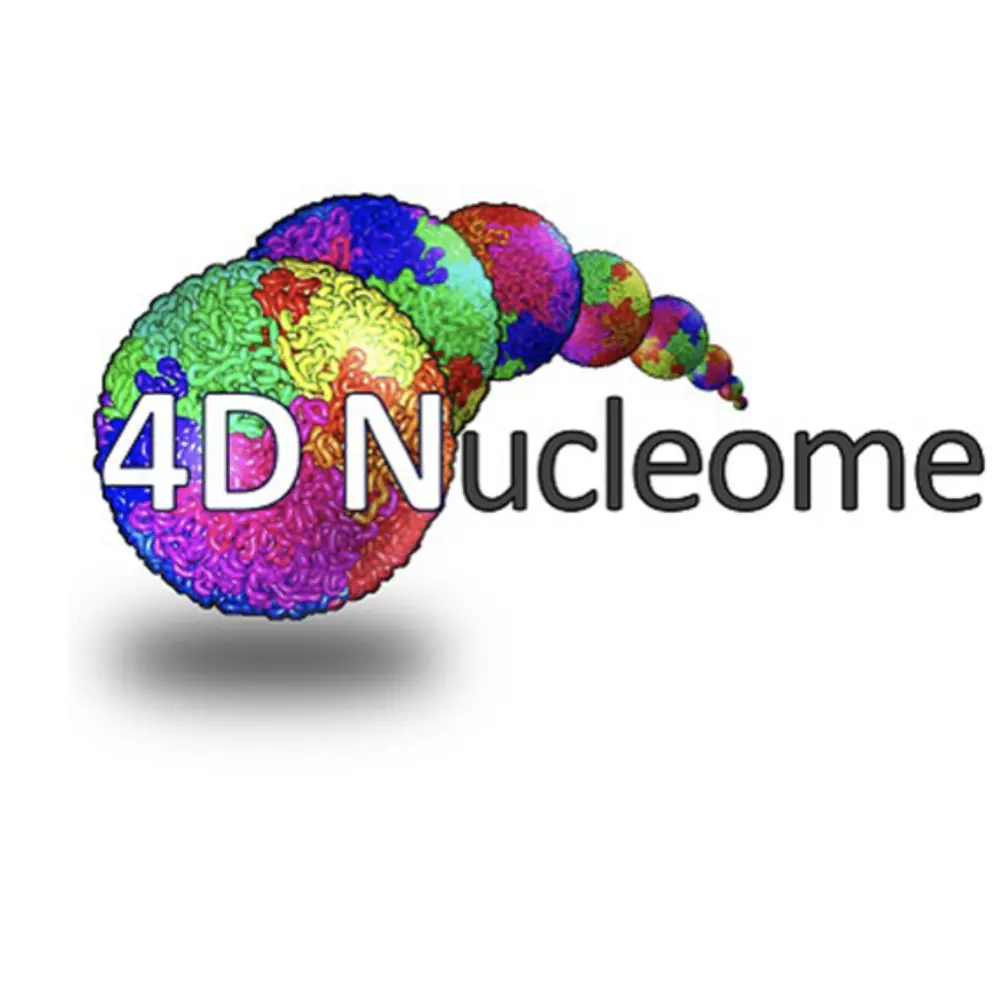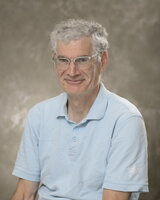
URBANA—University of Illinois professor Andrew Belmont has received two new grants from the National Institutes of Health that will advance his work in understanding nuclear structure and dynamics and gene expression.
Both grants are funded by the 4D Nucleome Program within the NIH’s Common Fund. The program aims to develop technologies that enable the study of how DNA is arranged within cells in space and time (the fourth dimension) and how this affects cellular function in health and disease. Recent scientific advances, coupled with technological breakthroughs in tools and methods, provide the opportunity to catalyze this emerging field of research, according to the NIH.
Belmont, a professor of cell and developmental biology in the School of Molecular and Cellular Biology, is a co-principal investigator on a multi-institution research center grant that will develop a better understanding of the structure of cell nuclei and how changes in that structure affect cell functions. The five-year, $10 million project is called, "Multiscale Analyses of 4D Nucleome Structure and Function by Comprehensive Multimodal Data Integration” and is headed by lead principal investigator Jian Ma of Carnegie Mellon University.
A growing body of research has shown that the cell nucleus is highly compartmentalized, and that this spatial phenomenon relates to cell function, Carnegie Mellon said in its announcement about the grant. But scientists don't yet understand how a type of structure in the nucleus called nuclear bodies tug and tether with the chromosomes that carry the genetic code, as well as other biomolecules such as RNA and proteins, they said.
Using both microscopy and a genomic method developed by two former graduate students, Belmont and members of his lab have been mapping interphase chromosome positioning relative to particular nuclear compartments. These compartments include nuclear speckles, which are large nuclear bodies that contain RNA-processing proteins, transcription factors, and RNAs.

“Nuclear speckles are very interesting because our recent genomic mapping shows there is a large subset of genes that locate reproducibly very close to speckles in nearly all cells. These chromosome regions mapping very close to speckles likely have special properties, including high gene expression levels. That’s led us to a lot of questions,” Belmont said.
Over the past five years, Belmont has collaborated closely with four other investigators, leading a center funded by the previous phase of the 4D Nucleome Program. It focused especially on developing new methods for genomic mapping of chromosomes within nucleus, as well as new microscopy methods for visualizing chromosomes within the nucleus. Jian Ma led the computational modeling portion of that center. Other investigators included Huimin Zhao from the University of Illinois, David Gilbert from Florida State University, and Bas van Steensel from the Netherlands Cancer Institute.
The new center, in addition to Professors Ma, Belmont, and Gilbert, will now include six other investigators across the country and one in Scotland, allowing the growing research team to extend their methods to a larger number of cell types and use the data to better predict the structure of chromosomes within nuclei.
“Our plan is to generate multimodal data, such as imaging as well as genomic data, and develop advanced machine learning algorithms and integrative structure models to make sense of it,” said Ma, an associate professor in CMU's computational biology department, in a release.
In addition to this new 4D Nucleome Center, Belmont is also working in collaboration with Kyu Young Han at the University of Central Florida and Yaron Shav-Tal at Bar-Ilan University in Israel to shed new light on nuclear dynamics and their impact on the biology of gene regulation. Their new, $4 million, 4D Nucleome-funded five-year award is entitled, “Identification of the active nuclear niche(s) using novel proteomic, genomic, transgenic, and live-cell microscopy technologies.”
In recent research, Belmont and members of his lab have determined that there may be at least two places in the nucleus that are special for gene expression. One is the nuclear speckle periphery.
“However, there might be other places that other genes might move to and touch, but we don’t know where they are in the nucleus,” Belmont said.
Together, Belmont, Han, and Shav-Tal will try to identify and better understand these other structures that other sets of genes may touch. At his laboratory, Han is building new, relatively low-cost microscopes with fast time acquisition and high resolution—comparable to much more expensive microscopes—that will allow individual researchers to better visualize and study these gene motions.
At Illinois, “we’re going to use our genomic method and the proteomics method to identify these unknown compartments in the nucleus,” Belmont said. “This will be followed by live-cell imaging of gene motion relative to these new compartments. We and Yaron Shav-Tal’s group are the biologists. We’ll test the hypothesis that one group of genes goes to nuclear speckles and another group of genes goes to these other structures,” he said.
Shav-Tal will explore how these same nuclear components may be involved in RNA movement from the site of transcription to export into the cytoplasm through the nuclear pores. Shav-Tal together with Belmont and Han will also investigate the dynamics of these nuclear compartments relative to each other and the dynamics and flow of proteins regulating gene expression between these compartments.
This work is supported by the NIH under award numbers 1UM1HG011593 and U01DK127422.
